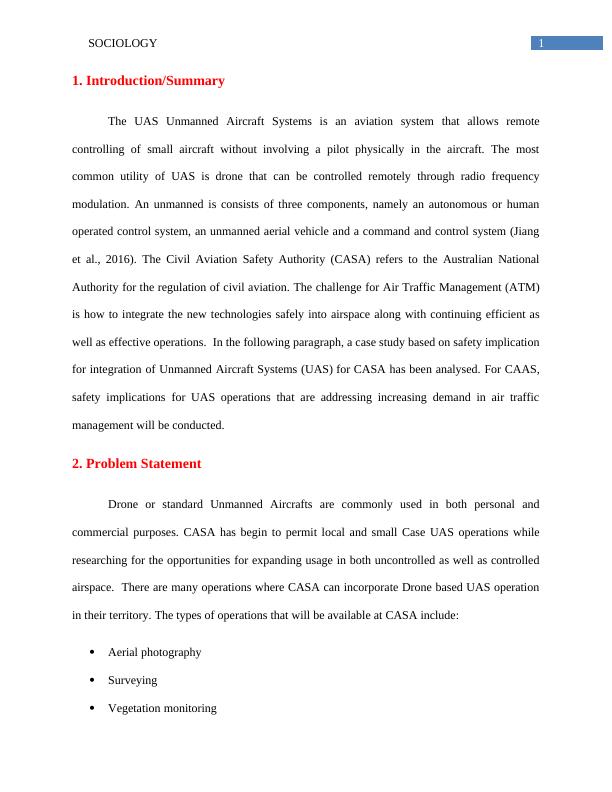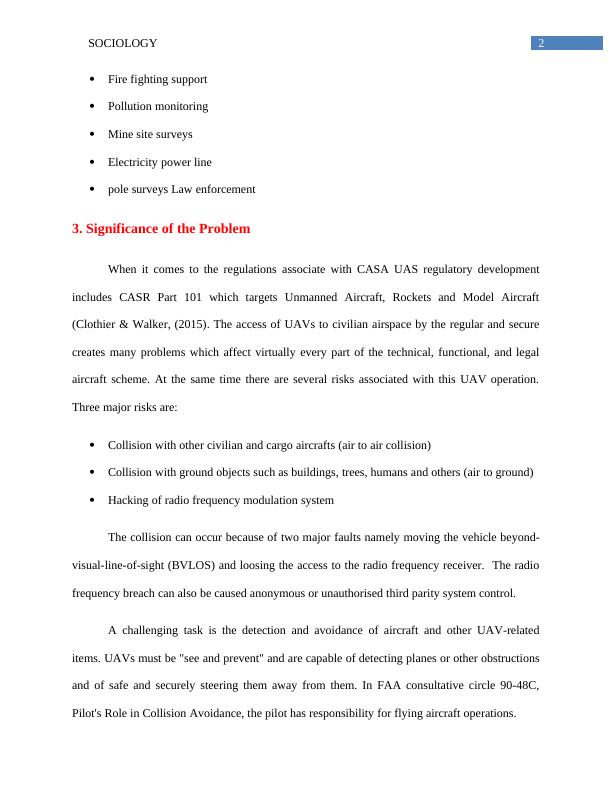Sociology Unnamed Aircraft Systems Summary 2022
8 Pages1543 Words91 Views
Added on 2022-09-18
Sociology Unnamed Aircraft Systems Summary 2022
Added on 2022-09-18
ShareRelated Documents
End of preview
Want to access all the pages? Upload your documents or become a member.
Impact of UAV on Air Cargo
|17
|3504
|180
Air Traffic Management in the Domain of Aviation
|11
|770
|69
Multi-Rotor Drones: Types, Applications, and Challenges
|35
|10372
|194
Air Traffic Management - PDF
|5
|1633
|60
Time Delay Analysis for Quadrotor (UAV) and Control Design
|9
|2253
|72
Drones and the Future of Aviation and Aerospace Industry
|5
|988
|222



